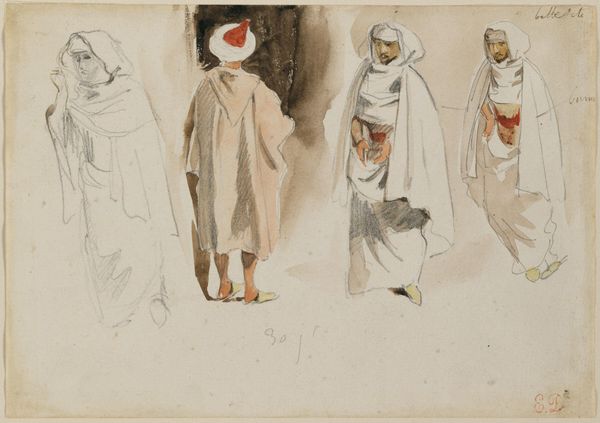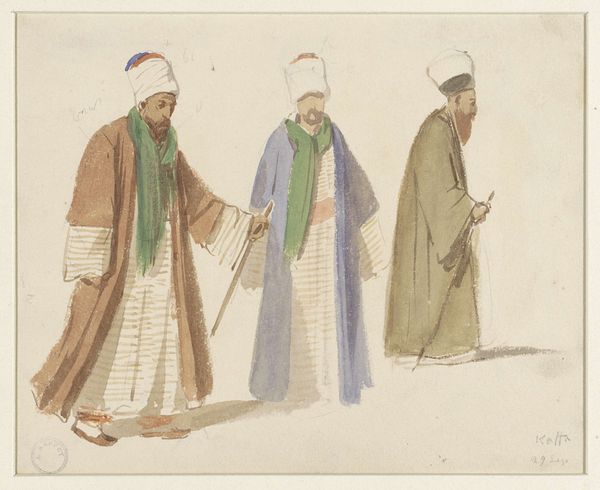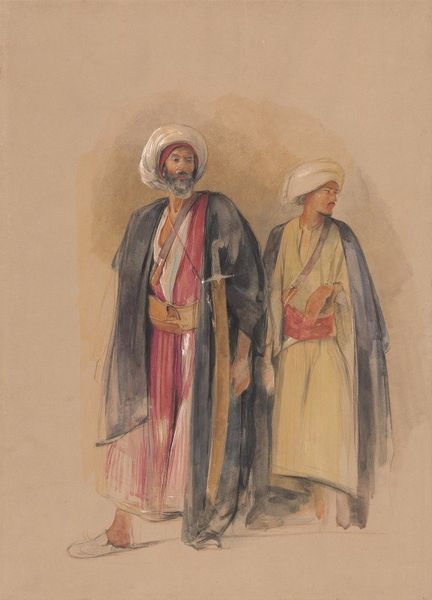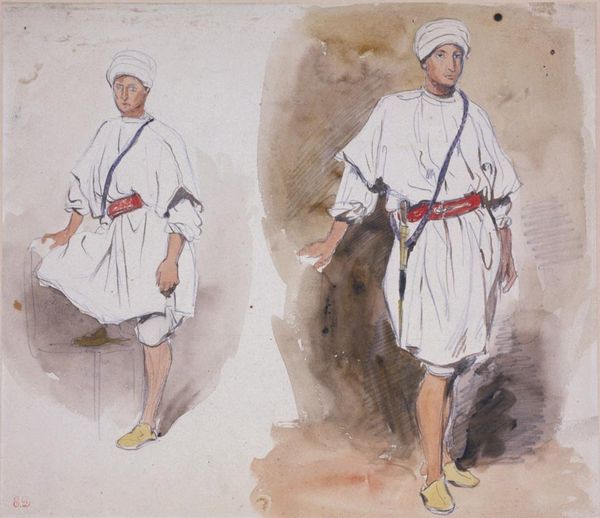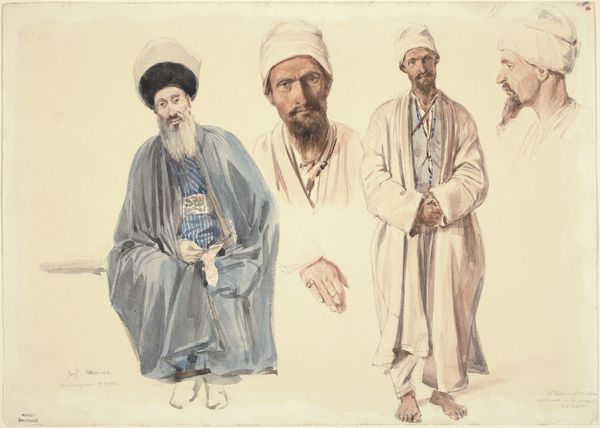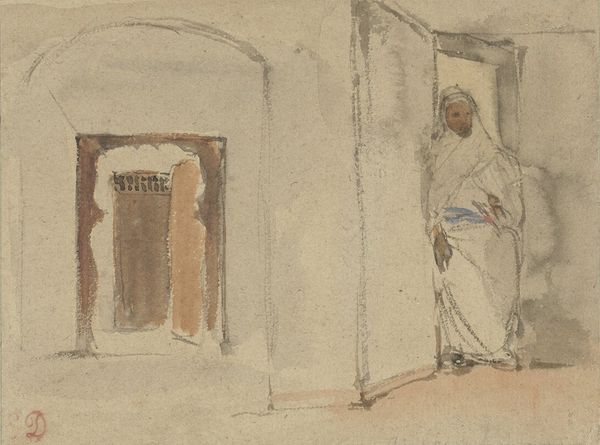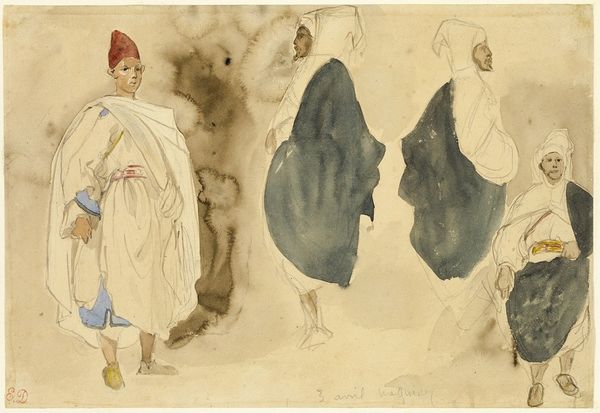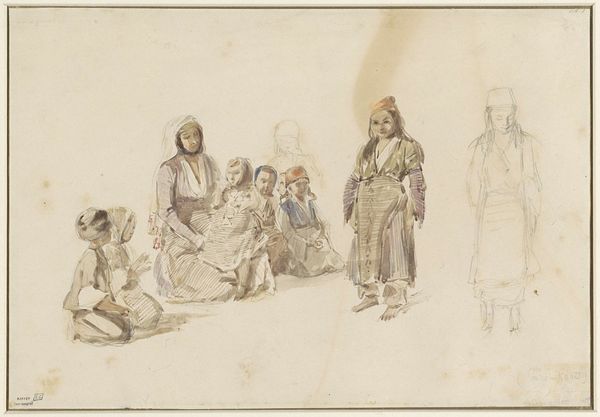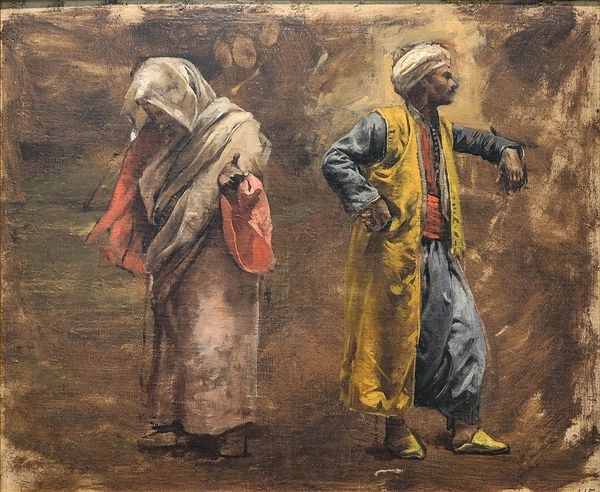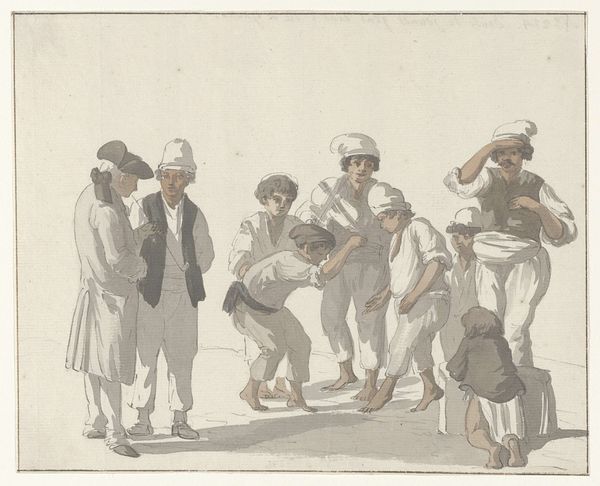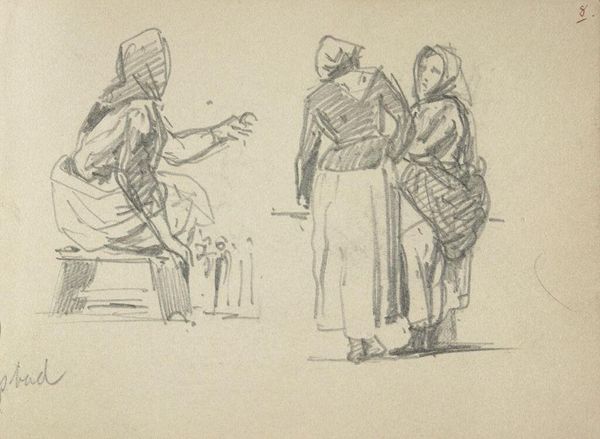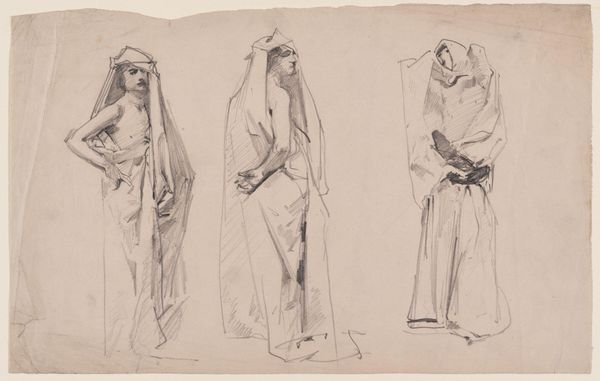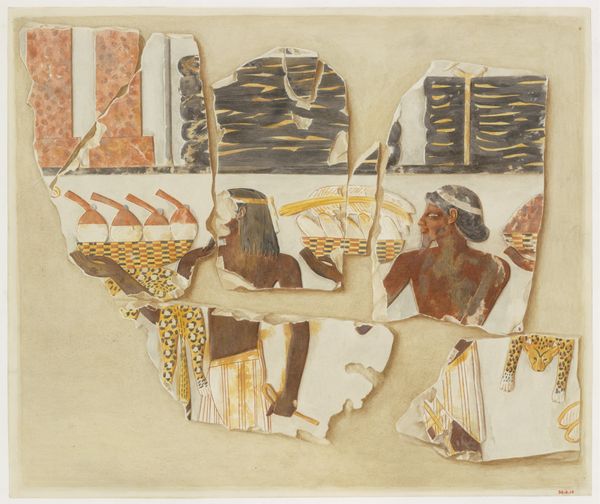
drawing, watercolor
#
drawing
#
charcoal drawing
#
watercolor
#
romanticism
#
orientalism
#
watercolor
Copyright: Public Domain: Artvee
Editor: This delicate watercolor and charcoal drawing, "Study of Arabs" by Eugène Delacroix, is compelling, the way the figures seem to emerge from the paper, the loose brushstrokes create a real sense of movement and fleeting observation. What can you tell me about it? Curator: Look closely at the materiality: watercolor, charcoal on paper. This wasn’t high art for Delacroix; this was about production, a document from his travels. What does that suggest about its original purpose and audience? The way the figures are captured almost as if the artist wants to record some observation of daily labor that will serve some other production later on. It’s as if it were about cataloging types, costumes. How might the means of its creation impact its reception and meaning, considering the power dynamics inherent in Orientalism? Editor: It’s interesting to consider the role of this work not just as a finished piece, but also as part of Delacroix's artistic process and how it fed into larger social power structures, I see the loose style as rapid documentation. Do you see an allusion to romanticism reflected in this depiction of labor? Curator: I think we have to consider these rapid sketches from a Materialist viewpoint, Romanticism idealized labor as much as landscapes, obscuring the harsher realities of production and consumption with orientalist stereotypes. How much does that historical gaze shape our encounter with it today, understanding his social circle that enjoyed colonial power? How do the artistic decisions themselves become implicated in perpetuating those ideologies? Editor: So it's not just about what the artist is depicting but also about how the act of creation itself reinforces existing power dynamics, by its availability. That shifts my view quite a bit. Thank you. Curator: Exactly. By examining the materials, production context, and reception, we gain a richer understanding of the artwork’s complex relationship to its time and beyond. I think you've provided us some new perspectives!
Comments
No comments
Be the first to comment and join the conversation on the ultimate creative platform.
